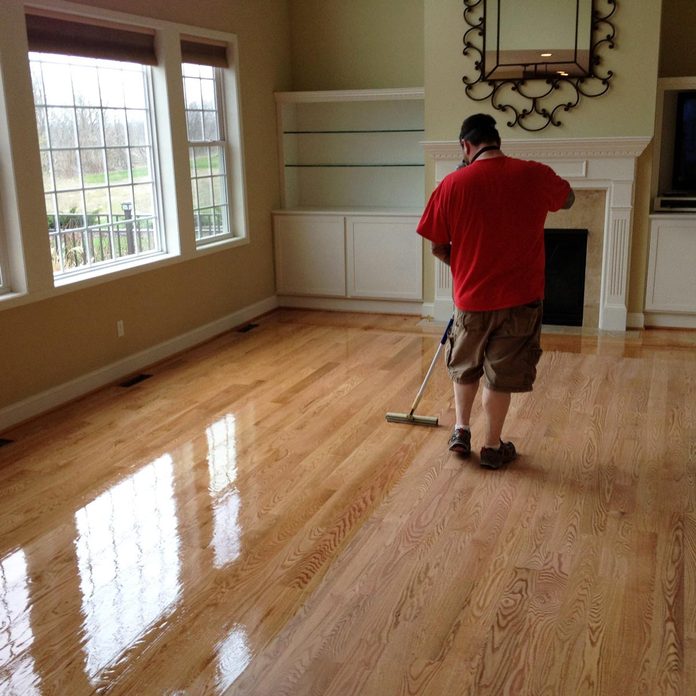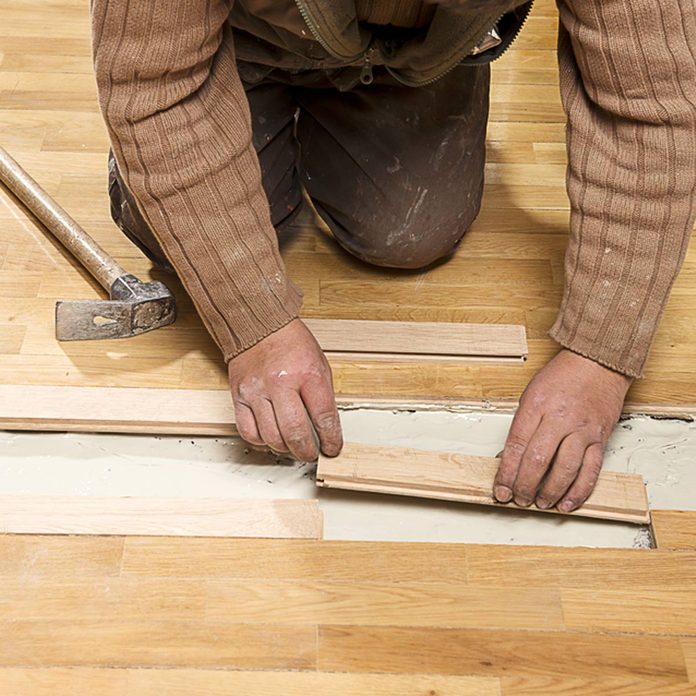Do you have ugly scratches in your wood floors? In many cases you can make those imperfections go away—or at least make them less visible. Here are our best tips for wood floor scratch repair.
10 Tips for Wood Floor Scratch Repair

First, Understand What Finish is On Your Floor
It’s important to start by knowing what kind of finish is on your floor. Is your finish oil or water based? Do you have a wax coating? Is the wood varnished or stained? Is there an aluminum oxide coating? Know what the surface is made of so you know how to start your wood floor scratch repair. If you didn’t install the floor and aren’t sure what type of finish it has, you can check here for more details on identifying it.

Clean the Trouble Spot Thoroughly
Start by cleaning the entire area around the scratch. You will want to remove all traces of dust and grime on the floor before you begin any other steps. Pay close attention to the inside of the crack itself, which should be totally free of dirt, if possible. If you have a wax layer, use a wax remover solution to clear away the wax before you begin the repair.
Also, check these hacks and tips to easily repair pet claw marks or scratches.

For Small Scratches, Try a DIY Solution
If you have a small, single scratch that’s only noticeable when you get close (like a scratch caused by an excited pet) and your floor has a relatively new finish, try a DIY home solution first. Mix equal parts apple cider vinegar and olive oil in a small cup, and dab the mixture into the scratch. Leave it for the rest of the day and rub it out. This method often takes care of minor scratches.

Darken the Scratch with a Blending Pencil
Blending pencils are specifically designed to fill in wood scratches that appear as lighter-colored marks on the floor. Make sure you pick the right color for your floor, and try this often-successful treatment for minor scratches.

Use a Finish Restorer for Light Scratches
Finish restorers are designed to help treat faded finishes or light scratches distributed across a wide area of your hardwood floors. These restorers can be effective in treating minor scuffs, especially if the wood itself has not been damaged.

Treat Medium Scratches with a New Coat of Finish
If you face medium scratches that show only slight damage, you may be applied to apply a new coat of finish to the area without having to refinish the floor entirely. Make sure the finish matches the original as closely as possible. If the wood was stained but has no finish, you may be able to get similar wood floor scratch repair results by re-applying the stain to help hide the scratch.

Lots of Scratches? Sand and Refinish
If your floor has noticeable scratches throughout, your best option is to sand down the floor and refinish it. A complete sanding removes scratches, but beware: This only works on real wood floors, not bamboo. If you have an engineered wood floor with a real wood surface, make sure the real wood surface is more than 1mm thick—sanding usually takes at least this much wood off the surface, so a thicker layer is required for complete sanding.

For Wide Gouges, Use Wood Filler
If the scratches in your wood floor are really more like gouges, your first step should be to use a wood filler to fill in the gaps before applying stain and finish. Here’s our guide on how to properly use wood filler.

Sand Down Imperfections
If your floorboards are showing signs of heavy damage, they may have ridges and other uneven spots. Your best bet is to sand these down to flatten your floor and avoid headaches in the future. For major wood floor scratch repair, you may have to rent a floor sander.

Patch or Replace Badly Damaged Floorboards
If the damage to your floor is severe, you may need to replace the damaged floorboard(s) entirely. If you can’t find matching floorboards, you can at least patch the affected area.
FAQ
How can I prevent future scratches in my wood floors?
An easy way to prevent scratches on your wood floors is by placing pads under all furniture legs. You can also put area rugs in high-traffic areas and keep floors clean to avoid scratches from dirt. Trim your pet’s nails regularly and avoid wearing high heels or hard-soled shoes to reduce the risk of scratches.
When should I call a professional about a wood floor scratch?
If you notice a deep scratch in a very visible part of your floor, consider calling a pro to fix it. They may be able to blend the repair into the surrounding area for a seamless look without sanding and refinishing the entire floor.


















